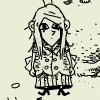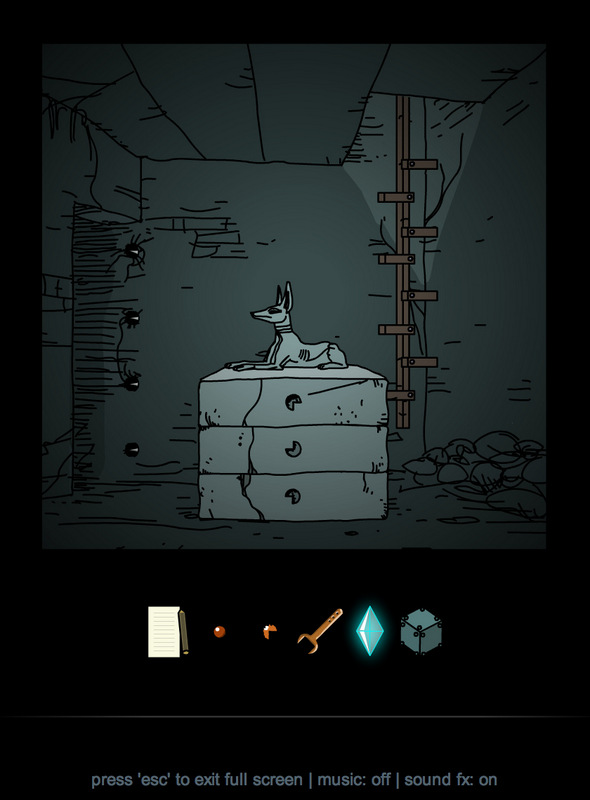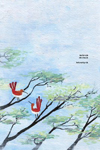Daymare Cat, NerdsRaging review
June 23, 2013
 Now, normally I would wait until Friday to post about a new free game, but we have some exclusive content here, and it is an installment in one of my favourite online franchises, so we’re making it a special Free Game Wednesday. And make sure to keep reading after the review for an exclusive Q&A with the creators.
Now, normally I would wait until Friday to post about a new free game, but we have some exclusive content here, and it is an installment in one of my favourite online franchises, so we’re making it a special Free Game Wednesday. And make sure to keep reading after the review for an exclusive Q&A with the creators.
About a month ago, I reviewed “Daymare Town”, a trilogy of online games by designer and artist Mateusz Skutnik. With breathtaking artwork, intriguing puzzles, and an atmosphere that can’t be beat, “Daymare Town” has become legendary in the annals of browser games.
Among the fans of the game is Cat, of the new music group “Cat and the Menagerie”. She was such a fan, in fact, that she decided to message Mateusz on Twitter. The two of them started talking, and before long, they had an agreement. Mateusz would create a new “Daymare Town” game, and Cat and her group would write the music for it.
The result is “Daymare Cat”, a game that certainly matches “Daymare Town” in terms of general goal (escape the town) and art style, but also features original music and a new game style. The original “Daymare Town” trilogy was a fairly straightforward point-and-click adventure game in static first person format. “Daymare Cat”, however is a sidescrolling platformer in third person (with the main character being modeled after Cat herself). Rather than the logic puzzles of the original trilogy, “Cat” also features strictly jumping and physics puzzles.
This could feel like a disservice to the original trilogy, but it actually doesn’t. The unique and striking artwork is still there, as is the desolate, howling atmosphere. The animation on Cat is well done, especially considering “Daymare Town” featured little in the way of animation, and it’s nice to see Mateusz stretch his legs a little. The controls are also thankfully simple; left and right to move, up to jump, down to use objects or go through doorways, all of which is made clear in the intro. The one big complaint that I have is that, while the jumping mechanic is forgiving in that you only need the barest inch on the platform to stay on it, it’s also highly sensitive. Jumping sends you careening upwards, and you can change direction in midair. Also, God help you if your browser is lagging, because that throws the physics engine completely out of whack. It takes some getting used to.
Once you do get used to it, however, the game flows nicely, and Mateusz’s artwork shines. The really striking aspect, however, comes with the way they incorporate Cat and the Menagerie’s music. The object is to collect five records and play them on five separate players. Each record plays an individual and interesting piece of music. When all of the records are collected, however, you realize the the five individual tracks come together to form one cohesive song, Cat and the Menagerie’s “Better”.
It’s a remarkably unique and striking aspect of the gameplay. I’m also pleased to note that, once you complete the game, you will be given a link to download the song (free) for yourself. I’m not a music critic, but I took that chance to download in a heartbeat. Cat has a near-ethereal voice, and the song itself is a mix of tribal beats and electronica that I found matched the game’s atmosphere beautifully, lending a new layer to an already remarkable franchise.
You’ll be through this game in about fifteen minutes, but it’s worth the playthrough. It’s a delightful addition to the “Daymare Town” series, and a fine piece of collaboration by two excellent artists.
4/5








 So I am in the middle of a very interesting collaboration with Cat Janhke ( I promise I don’t sing) and as a result I had the distinct pleasure to talk to both Cat Jankhe and Mateusz Skutnik about another very interesting collaboration, Seriously.
So I am in the middle of a very interesting collaboration with Cat Janhke ( I promise I don’t sing) and as a result I had the distinct pleasure to talk to both Cat Jankhe and Mateusz Skutnik about another very interesting collaboration, Seriously.
 Tetrastych, albo bardziej po polsku – czterowiersz jest to typ strofy poetyckiej składający się z czterech wersów. Najczęściej izosylabicznych, połączonych ze sobą rymami. W poezji znany jest już od czasów antycznych, w literaturze polskiej pozostaje wciąż najpopularniejszym typem strofy, stosowanym również w tekstach epicko-lirycznych, na przykład w balladach. Tetrastych to również tytuł nowego albumu Mateusza Skutnika.
Tetrastych, albo bardziej po polsku – czterowiersz jest to typ strofy poetyckiej składający się z czterech wersów. Najczęściej izosylabicznych, połączonych ze sobą rymami. W poezji znany jest już od czasów antycznych, w literaturze polskiej pozostaje wciąż najpopularniejszym typem strofy, stosowanym również w tekstach epicko-lirycznych, na przykład w balladach. Tetrastych to również tytuł nowego albumu Mateusza Skutnika.